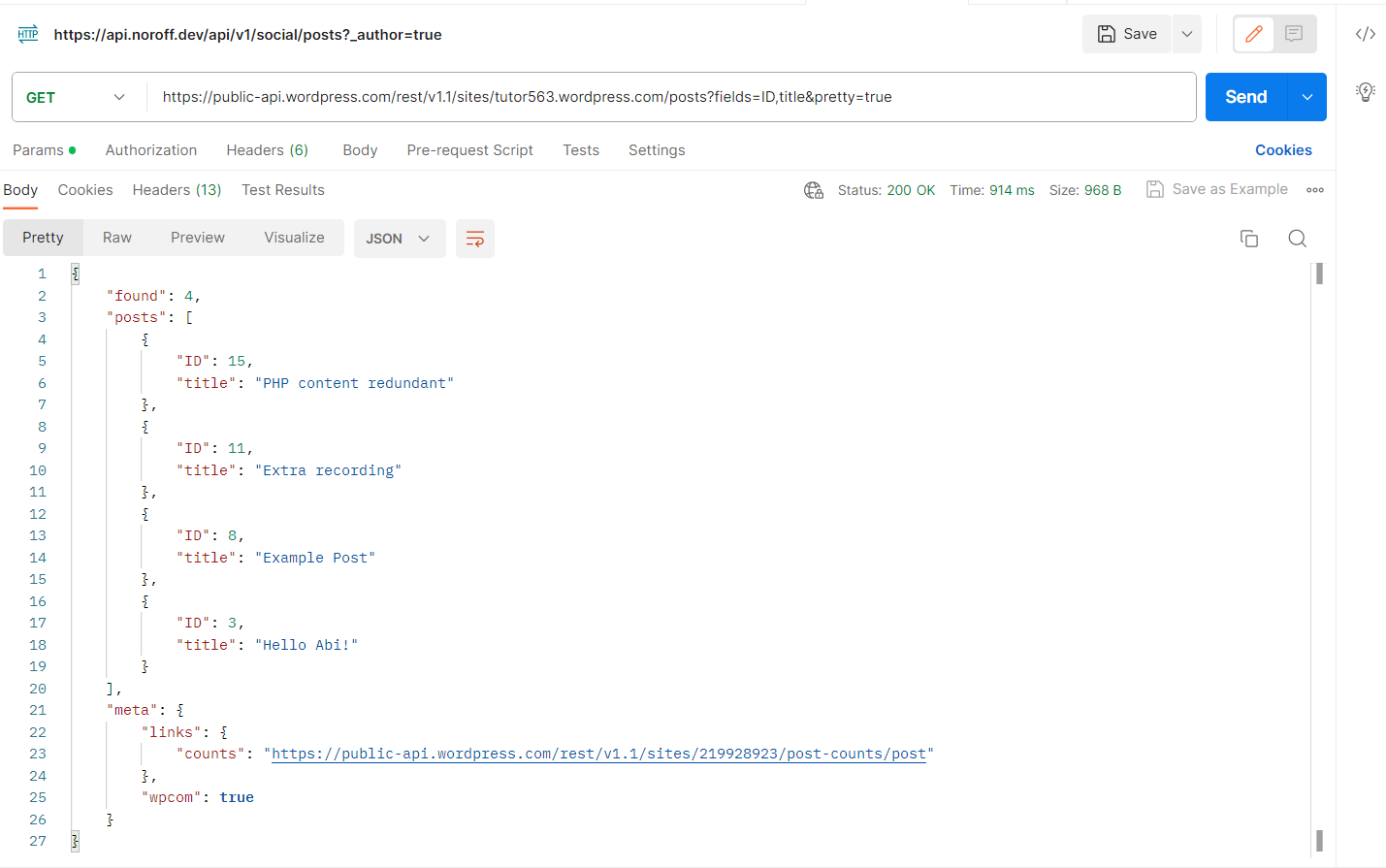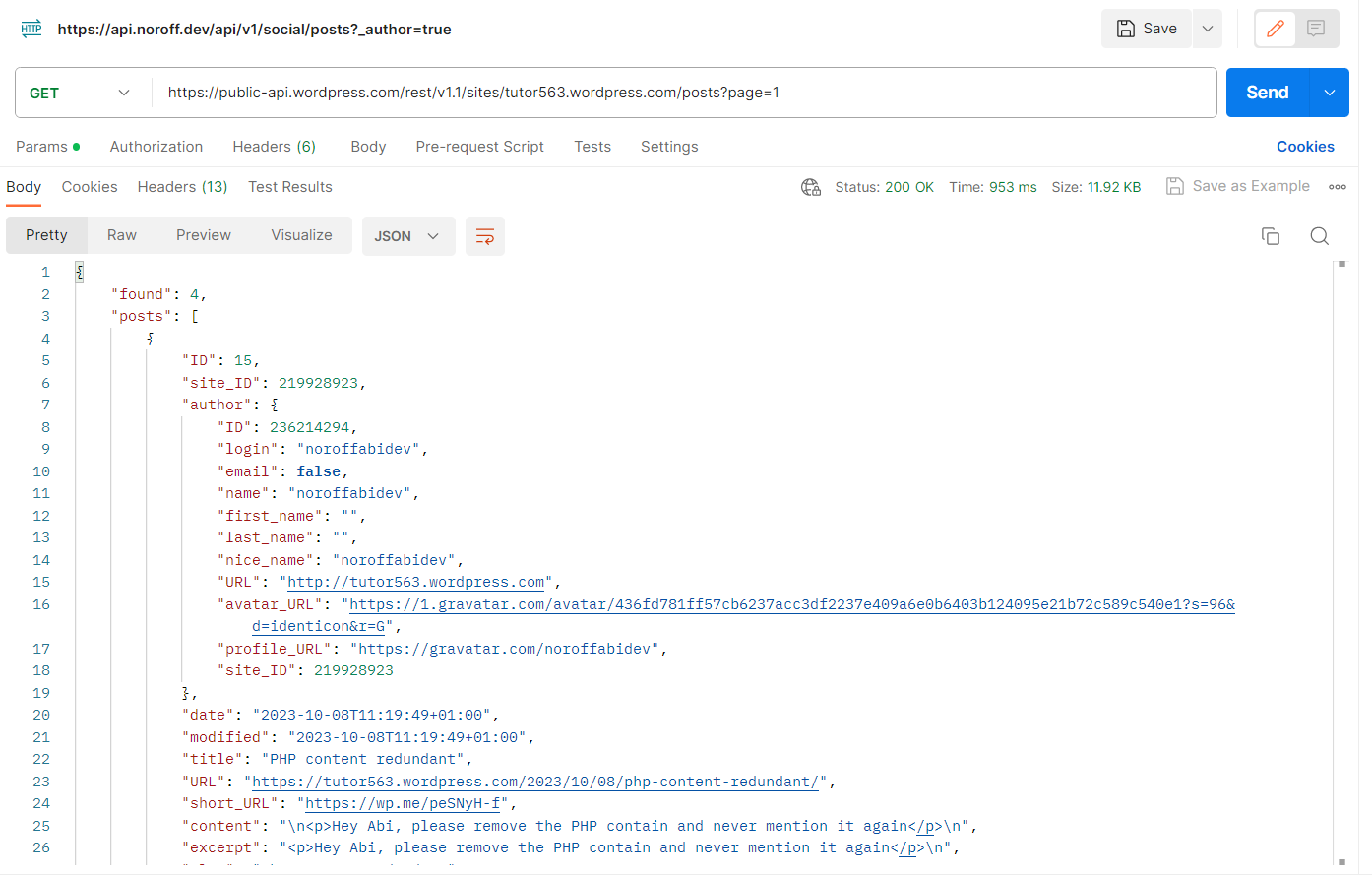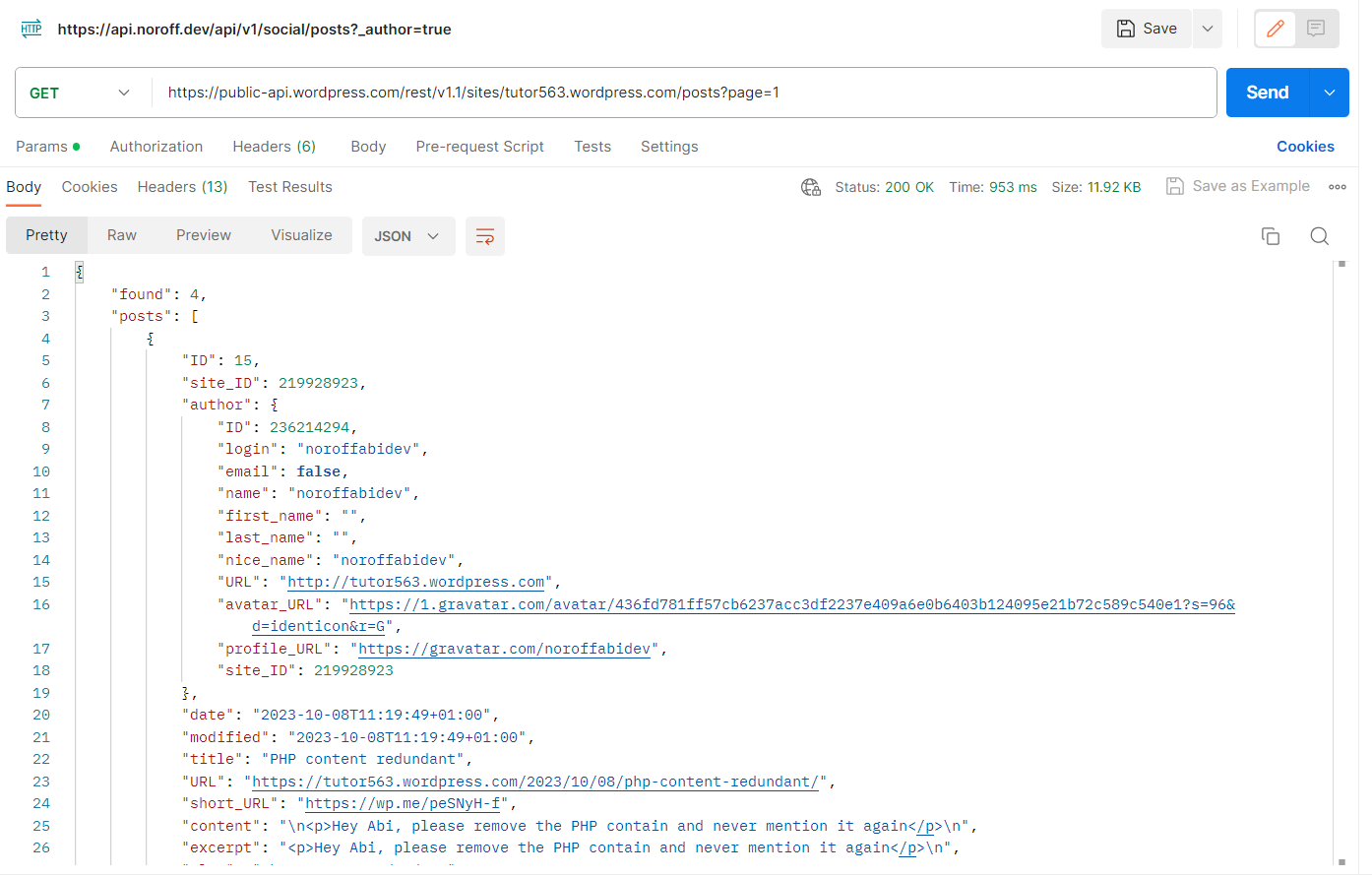Introduction
The WordPress REST API (Representational State Transfer Application Programming Interface) is a set of WordPress web service endpoints that provide you with an interface to interact with your WordPress website programmatically over HTTP requests. This API gives you the chance to interact with every entity (posts, pages, etc.) on your WordPress site. There are cases where one would prefer to interact with a WordPress site via the API. An example is when you wanted the advantage of the admin panel for creating content but wanted to be able to customize how that content is displayed by writing your own HTML, CSS, and JavaScript. For that, we can use the WordPress REST API.
A headless content management system (CMS) is a CMS that provides content management and storage capabilities but does not dictate how the content is displayed or delivered to end-users. We can make a WordPress website headless. Up until now, we’ve been using external APIs that we don’t control. But with WordPress, we can create our own API. All the content management happens on the WordPress admin panel, but displaying that content is handled on a separate website that we build using HTML, CSS, and JavaScript.
Understanding the WordPress REST API URL
Every REST API URL including WordPress REST API comprises a base URL, an endpoint, and a method. The base URL is the main part of the URL on which all other endpoints are based. An endpoint represents a function that can be executed against one of the resources in an API. It can be authenticated or unauthenticated. Public endpoints are unauthorized and don’t require user credentials, whereas private endpoints are authenticated and do require user credentials. Here is a typical API URL for the WordPress REST API:
https://public-api.wordpress.com/rest/v1.1/sites/tutor563.wordpress.com/posts
https://public-api.wordpress.com/rest/v1.1is the base URL./sites/tutor563.wordpress.com/postsis the endpoint.
Depending on how you setup your Wordpress site, there are two options to use WordPress REST API. You can either use wordpress.org or wordpress.com. And each of these option has its endpoints.
The Methods
Each REST API endpoint is associated with a method that specifies the intended operation to be executed on the data within the resource. The primary operations that can be carried out on data through a REST API are create, read, update, and delete, collectively known by the acronym CRUD. Each of these operations is correlated with a specific HTTP method, as outlined below:
- Create operation: POST
- Read operation: GET
- Update operation: PUT or PATCH
- Delete operation: DELETE
You can try this endpoint https://public-api.wordpress.com/rest/v1.1/sites/tutor563.wordpress.com/posts with a GET method in Postman(An API client) to see for yourself.
Query Parameters
Query parameters are appended to the end of a URL and are separated from the URL path by a question mark (?) and separated from each other by ampersands (&). Here’s the general structure of a URL with query parameters:
https://public-api.wordpress.com/rest/v1.1/sites/tutor563.wordpress.com/posts?order=ASC&pretty=true
WordPress.org
WordPress.org operates on a self-hosted setup, meaning you host it on your own server. The base URL for the REST API with a WordPress.org site corresponds to your own site’s URL and follows this pattern: [Your Site URL]/wp-json.
Some API endpoints for WordPress site built with wordpress.org are:
- GET
https://example.com/wp-json/wp/v2/posts- Query this endpoint to retrieve a collection of posts from the WordPress site hosted onhttps://example.com. - GET
https://example.com/wp-json/wp/v2/posts/<id>- Query this endpoint to retrieve a specific post record from the WordPress site hosted onhttps://example.com. The id is the id of the post to be retrieved.
WordPress.com
The WordPress REST API is also available for WordPress.com sites, making it possible to programmatically access and interact with content on WordPress.com-hosted websites. The base URL for WordPress.com REST API is the https://public-api.wordpress.com/rest/v1.1.
Some API endpoints for WordPress site built with wordpress.org are:
- GET
https://public-api.wordpress.com/rest/v1.1/sites/<$site>/posts/- Query this endpoint to retrieve a collection of posts from the WordPress site hosted onhttps://example.com. The$siterepresent the Site ID or domain. - GET
https://public-api.wordpress.com/rest/v1.1/sites/<$site>/posts/<$post_ID>- Query this endpoint to retrieve a specific post record from the WordPress site hosted onhttps://example.com. The post_ID is the id of the post to be retrieved.
Practical examples
Launch your API client or web browser and try the following examples:
Sorting
To sort the list of the data retrieving from wordpress site, you need to pass a query parameter called order with either ASC or DESC as it value.
For WordPress.com:
https://public-api.wordpress.com/rest/v1.1/sites/tutor563.wordpress.com/posts?order=ASC
For Wordpress.org
https://example.com/wp-json/wp/v2/posts?order=ASC
You can decide what parameter the sorting is based on by specifying the order_by query parameter and a field as its value. See example below:
For WordPress.com
https://public-api.wordpress.com/rest/v1.1/sites/tutor563.wordpress.com/posts?oder_by=id&order=DESC
For WordPress.org
https://example.com/wp-json/wp/v2/posts?order_by=id&order=DESC
Filtering
Filtering narrows down the data to meet specific criteria, making it easier to work with and display relevant information to the user. Filtering is a common operation in APIs, especially when dealing with large sets of data. Basically, it involves specifying one or more query parameters to retrieve a chunk of data from sets of data. See an example below:
For WordPress.com:
https://public-api.wordpress.com/rest/v1.1/sites/tutor563.wordpress.com/posts?fields=ID,title&pretty=true
For WordPress.org:
https://example.com/wp-json/wp/v2/posts?fields=ID,title&pretty=true
In the URL example, the field parameter lists the properties to return per record from the WordPress site while the pretty parameter ensures the data returns in JSON format. You can try this in your browser.
Pagination
You can use the page parameter for pagination. The page returns the Nth 1-indexed page of posts. See example below:
For WordPress.com:
https://public-api.wordpress.com/rest/v1.1/sites/tutor563.wordpress.com/posts?page=1
For WordPress.org:
https://example.com/wp-json/wp/v2/posts?page=1
Embeds
To access related resources for an item, add the _embed parameter to your URL. For example, if you set featured images on your posts, you can use /wp/v2/posts?_embed to retrieve featured images added to the API call.
For WordPress.com:
https://public-api.wordpress.com/rest/v1.1/sites/tutor563.wordpress.com/posts?_embed=author
For WordPress.org:
https://example.com/wp-json/wp/v2/posts?_embed=true
Search
To execute a search query, you’ll need to append a search parameter to your API request URL. See examples below:
For WordPress.com:
https://public-api.wordpress.com/rest/v1.1/sites/tutor563.wordpress.com/posts?search=php
For WordPress.org:
https://example.com/wp-json/wp/v2/posts?search=php
API Documentation
As with all APIs, the best way to know how to use and work with them is to read the API documentation. Make sure that you’re using the resources that the API developers have given you.
READ
As you can see, working with WordPress’s REST API is quite simple. If you want more information about using WordPress’s REST API, you can watch the below video.
WATCH
Video: WordPress: REST API (2h 7m)
WooCommerce API
WooCommerce extends the WordPress REST API to include routes for products, orders, customers, and more. You can find the documentation for the WooCommerce API here.
Please be aware that as an ecommerce package, WooCommerce requires stricter security than WordPress. You will need to use authentication to access parts of the WooCommerce API. In order to view products without using authentication you will need to access this endpoint: /wc/store/products.
Activities
Activity 1
WATCH
The below video: https://vimeo.com/546521086/e7b75810eb
Lesson Task
Brief
Using the WordPress REST API, create a separate, standalone webpage (not built as a page on WordPress) that lists the products you created with WooCommerce on your WordPress site in Module Assignment 1.
Because you’re using the API, each time an administrator creates or updates a product, the change will pull through to your product list page.
Your product page should be made using HTML, CSS and JavaScript and include a list of all the product names, images and prices.
Level 1 Process
- Create the page by fetching data from the WordPress REST API on your web host and displaying it on the page.
- Create a new product on your WordPress admin page, and make sure it pulls through to your products page.
WATCH
Attempt to work with the WordPress REST API first, but if you are confused or would like more info on the WordPress REST API, please watch this vimeo video: WordPress REST API




